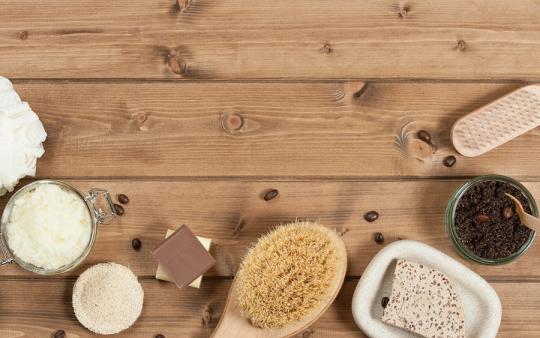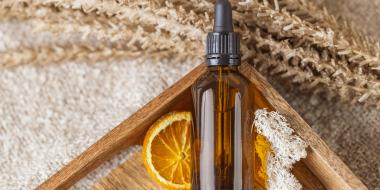Remember when BB creams first became a thing? We’re talking 2011-era skincare, here! Now staples in many western makeup drawers, the product has grown in status, thanks in part to the global skincare phenomenon, K-beauty (Korean beauty), which promises the holy-grail-acquisition of a dewy glow! We're here to tell you, you can take some of K-beauty's lessons without becoming a religious devotee!
K-beauty terms like “glass skin” or “chok chok” (fabulously glowy skin) find their roots in a complementary multi-step (up to ten of them!) skincare regimen that adherents follow both morning and night in a prescribed order. For devotees, ten steps to gorgeous skin is well-worth the time, while for others, the thought of ingredients in their products like snail slime, donkey milk, pearl extract, or horse oil will have them rolling their eyeballs near out of orbit over yet another anti-aging quest.
#nofilter
K-beauty is a multi-layered skin saga that myths are made of, literally. Type K-beauty into any search and you’ll be inundated by images of milky, flawless, #nomakeup skin, the kind that looks so perfect it can't possible by real. Sure, it’s total skin goals, but it’s worth mentioning that:
- South Korea is the plastic surgery capital of the world, and...
- hello, Photoshop.
It’s also important to note that while glass skin and chok chok are attainable, they are also concepts birthed out of a patriarchal culture where women are raised from a young age to place supreme importance on how they are outwardly perceived: having flawless skin means perfection and acceptance. In recent years the movement “Escape the Corset”, has seen Korean women rebelling against Korea’s unrealistic beauty standards and rejecting various notions of beauty, including plastic surgery, makeup, and, yes, K-beauty.
#worthit?
End of story, right? Why on earth would anyone want to indulge in a skincare regimen that’s steeped in the history of female oppression? Here’s the thing: as with all great myths there are valuable lessons woven into the retelling of the narrative in a new light. Undoubtedly, a society that has held physical appearance to unrealistic standards and has invested billions in beauty technology will have wisdom to share, even if it’s tainted by misogyny. Believe it or not, the concepts and routine of K-beauty are rooted in a history of natural skin care practices that emphasizes the value of self-care.
#FOMO
So, does K-beauty actually work? Beauty experts, dermatologists, aestheticians, and practitioners have varying opinions ranging from “life-changing” to “waste of time”. Scientific research is limited as many of the uniquely strange ingredients in specifically-formulated K-beauty products are slow to get regulation. Further, optimal results are dependent on a number of factors, including the combining or isolating of certain ingredients, which, in a multistep, multiproduct regimen leaves opportunity for error and requires the average consumer to be fairly knowledgeable in ingredient interactions. For example, retinol and benzoyl peroxide can not only potentially cancel each other out but can also be too drying and irritating when combined on skin. That aside, a reasonable system of skincare that places skin health first through thorough cleansing, moisturizing, and protecting is certainly worth investigating.
#selfcare
Overwhelming at first, K-beauty can also be beautiful and simple and a lovely gift of self-care. One of the most common misconceptions with the regimen is the rigidity of the ten steps.
Charlotte Cho of Soko Glam, a website dedicated to all things K-beauty, takes a more realistic approach to embracing the program: "There's a rhyme and reason for every single step and it's done very methodically and systematically, but you don't have to use every single step. They call it the 10-step skincare routine because these are the ten things you can basically do.” Instead of getting bogged down with all ten steps, try starting with a few steps and products at a time, observe how your skin reacts and build from there.
#gogreen
Furthermore, you aren’t limited to specifically K-beauty products. There are many green and clean K-beauty brands out there that make gorgeous serums, face oils, scrubs, and masks. If you’re vegan, or snail slime just makes you squirm, pick up products you feel good about. Better yet, if you have some you’re already using and love, simply invite a couple of new luxurious friends to the face party!
When choosing which steps to adopt and which new products to purchase, keep where you live in mind. The Korean climate is very dry, and the multilayered steps of moisturizing may be too much if you have oily skin or live somewhere humid. There is no one size fits all: the steps and products may be used daily, weekly, or change with season and travel.

The K-Beauty Method
#1 Oil Cleanse
Done morning and night, oil cleansing draws out impurities, sebum, SPF, and pollution. Gently massage oil cleanser into skin starting from the innermost part of your face, working outward and upward with a circular motion. Rinse with lukewarm water or wipe with a warm, damp washcloth. This massage is believed to stimulate circulation, create a brighter appearance and combat gravity!
#2 Foam Cleanser
The double-cleansing method of using two different kinds of cleansers to thoroughly clean your face is the foundation of K-beauty: oil-based followed by water-based. The theory is that the foam cleanser removes water-based dirt and debris that your oil cleanser doesn’t. Along with step one, this should be done morning and night. If your face feels too tight after cleansing, it means your cleanser’s pH is too high (it doesn’t mean your skin is extra clean!). Find a gentle formula that won’t strip or dry out your skin.
#3 Exfoliation
Exfoliation cleans out clogged pores and sloughs off dead skin cells, leaving the skin looking brighter. Not recommended for daily use, rather if you have sensitive skin, aim for once a week, while more mature skin should only indulge twice a month.
#4 Toner
We associate toners with astringents that strip skin of debris and oils, but in K-beauty skincare, toners are referred to as refreshers or skin softeners. Humectants such as glycerin and ceramides balance pH and draw moisture into the skin to prepare it for the next step. Douse toner into your hands, rub them together to activate the ingredients, and press on face.
#5 Essence
Essence is the heart of K-beauty! Lightweight formulas packed with hydrating, anti-aging, and complexion-enhancing ingredients are believed to affect skin on a cellular level, speeding up cell turnover and making skin appear smoother and brighter. Essences penetrate the skin at a deeper level and help the skin to absorb products in the steps to come. Sprinkle into hands and lightly pat into face and neck.
#6 Treatments
Treatment boosters, serums, and ampoules are super-concentrated ingredients used to target specific issues such as acne, fine lines, and hyperpigmentation. Those who practice K-beauty believe in layering lighter to heavier products to allow for optimal absorption and avoid clogging pores. Apply treatments directly to problem areas and gently tap oils into skin.
#7 Sheet Mask
Sheet masks are used twice a week (more if your skin is dry). Saturated with ingredients like collagen and vitamin C, these indulgent masks are smoothed onto clean skin and promise a major boost of hydration.
#8 Eye Cream
A gentle eye cream or serum is used regularly to reduce dark circles, crow’s feet, and lines. Use your pinkie to gently tap the formula into the skin around the entire orbital bone, avoiding the water line.
#9 Moisturizer
The moisturizer step is a twice daily affair, locking in moisture to plump up and protect skin, and can take the form of a lotion, gel, or sleeping mask. Ingredients to look for are bamboo, hyaluronic acid, and green tea.
#10 Sunscreen
Sunscreen is serious business for K-Beauty devotees and is to be worn whether indoors or out! It is the last step so as not to be diluted by other products. Gently tap into skin and reapply during the day.
#glowup
Be gentle to your skin. Use ingredients that make your soul happy: a delicious lavender serum, a rosewater toner, and a lovely shea butter balm are simple, luxurious, healing, and totally glow-inducing. Indulge in K-beauty’s conscious me-time—mindfulness while caring for our skin is as important as what we put on it. And most importantly, take care of yourself. All the balms, butters, scrubs, and cleansers in the world won’t mask a crummy lifestyle. Prevention first! Eat well, get quality sleep when you can, and stay hydrated. Aim for “cloudless skin”, a flawless complexion illuminated by a healthy aura emanating from the inside out.
K-beauty may be the greatest contemporary beauty parable yet. Something we can all take lessons from whether we drink thirstily from the holy grail of beauty or simply enjoy the benefits that come from taking an occasional sip.






